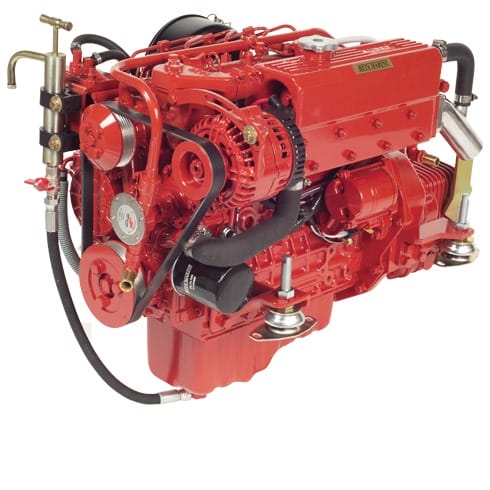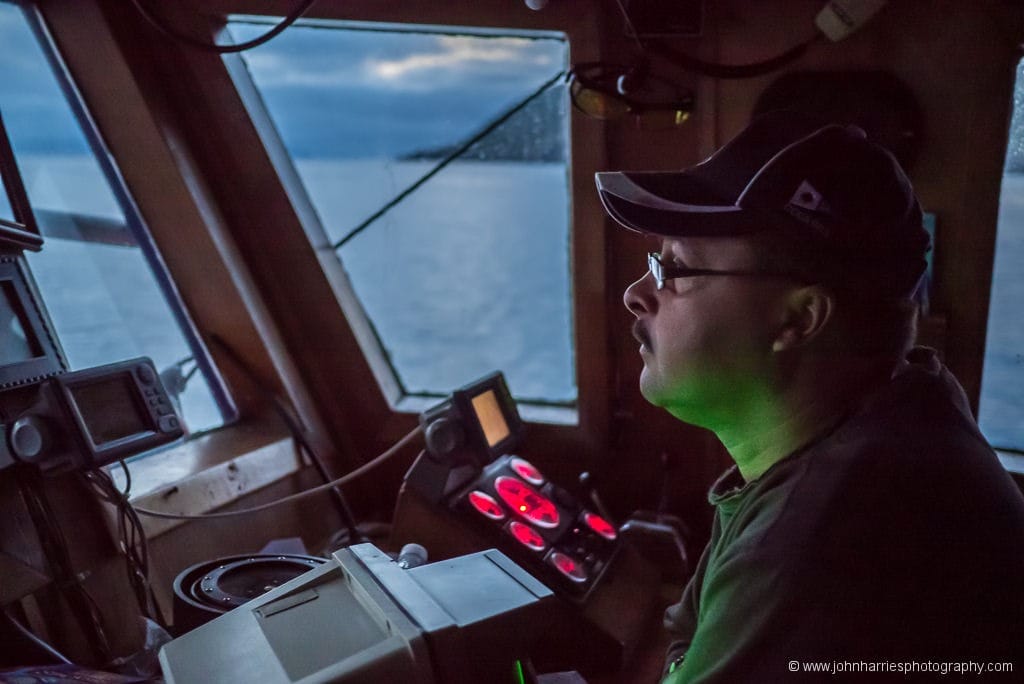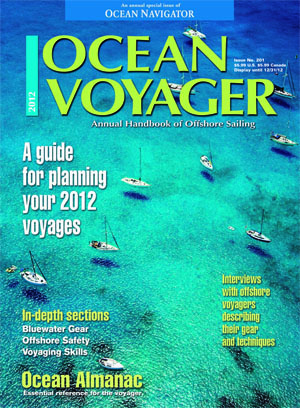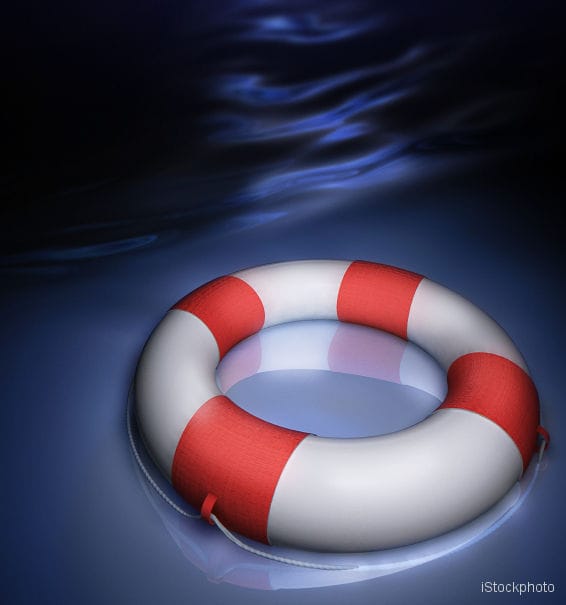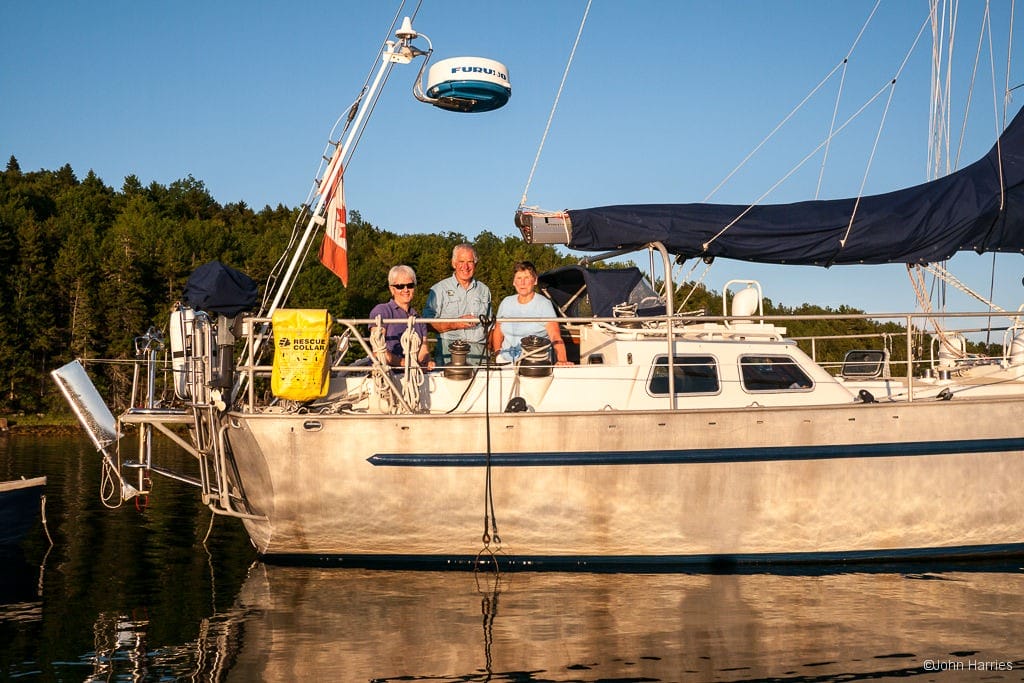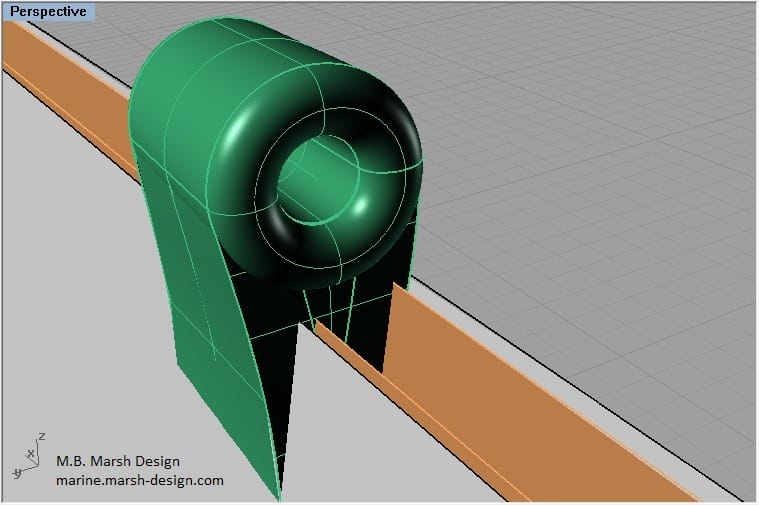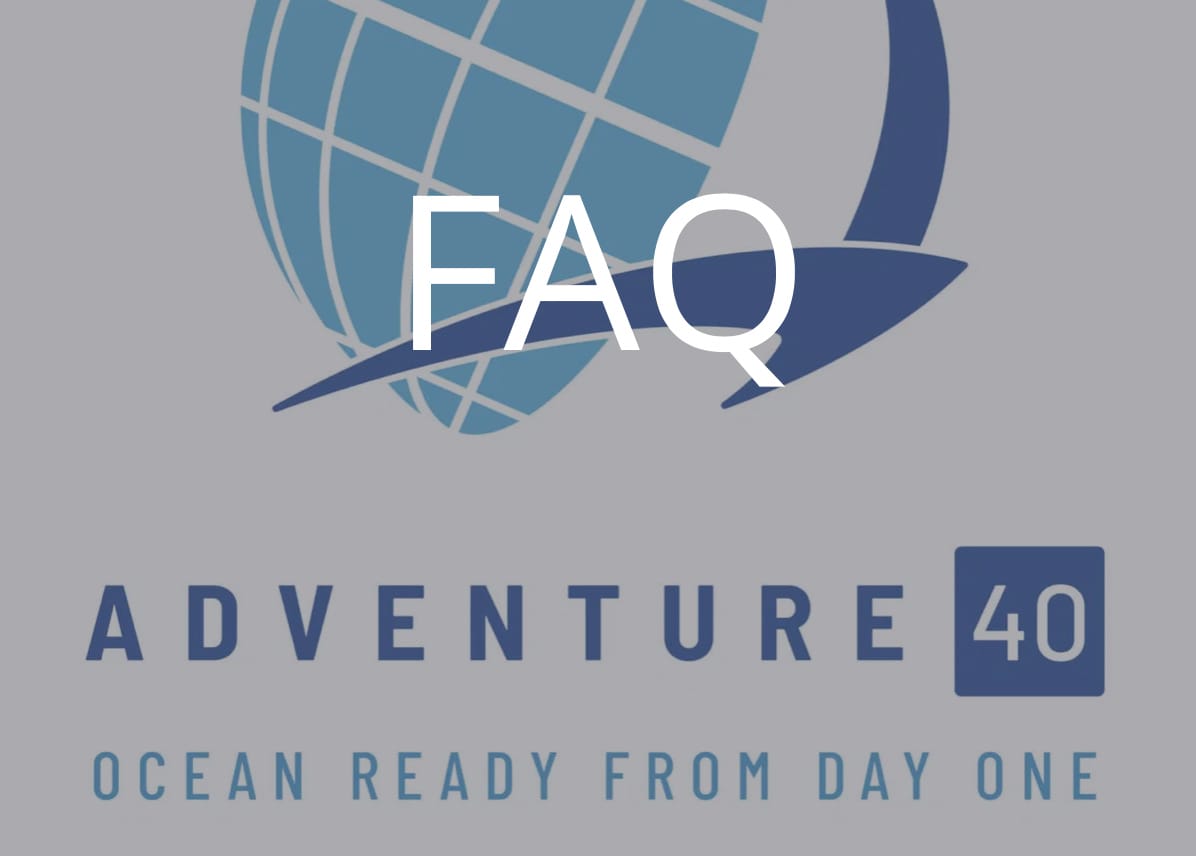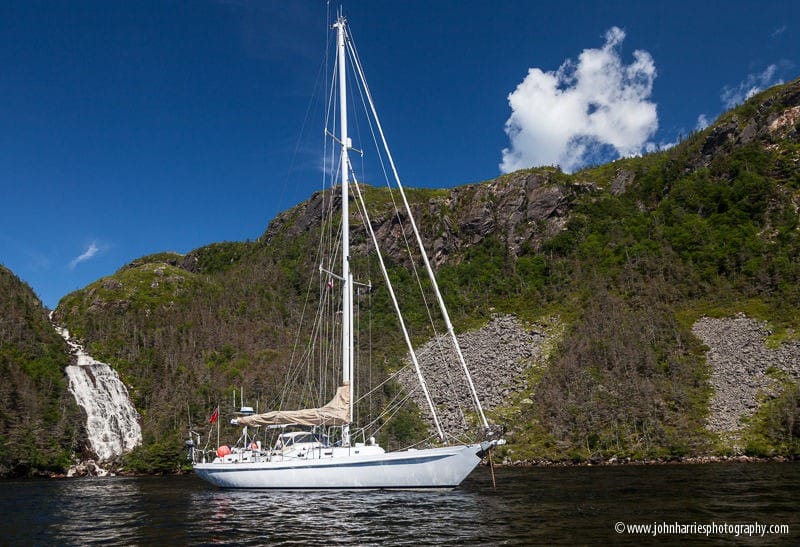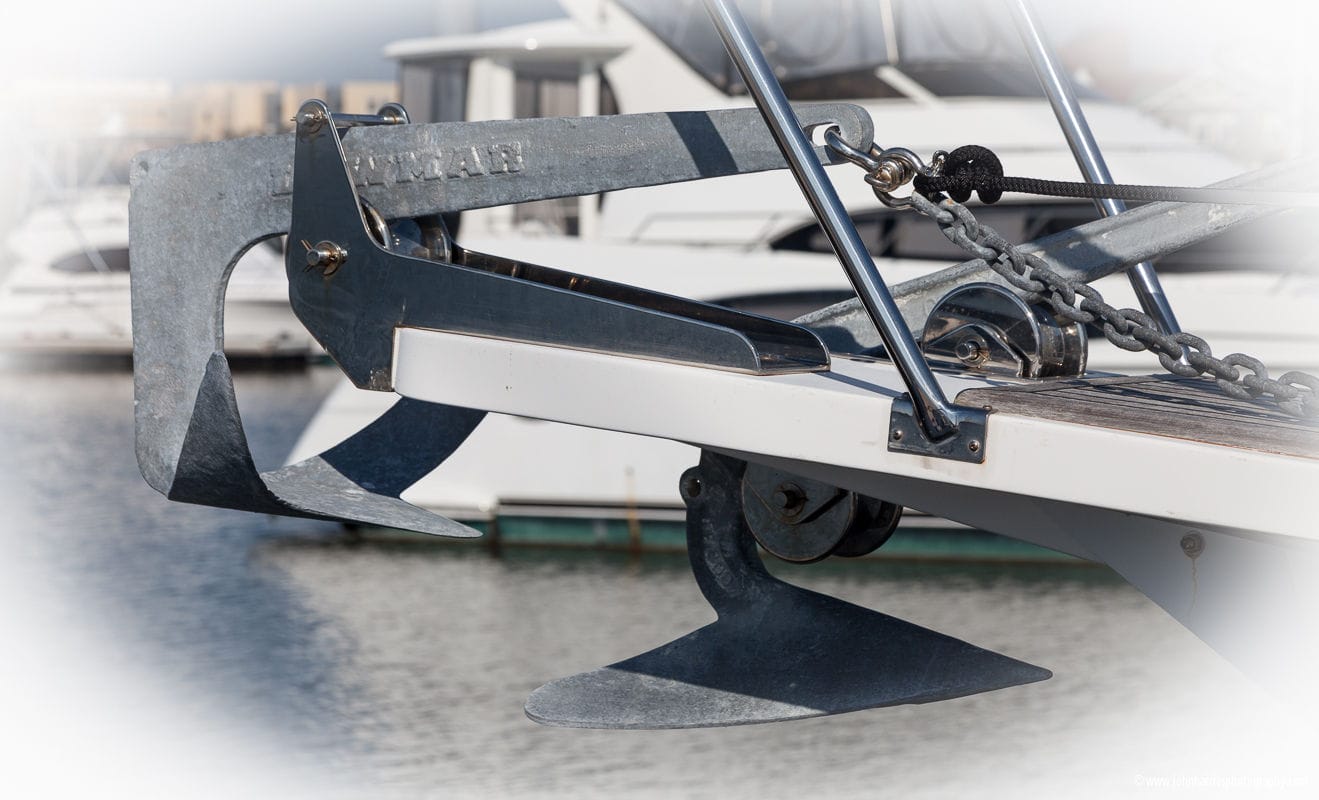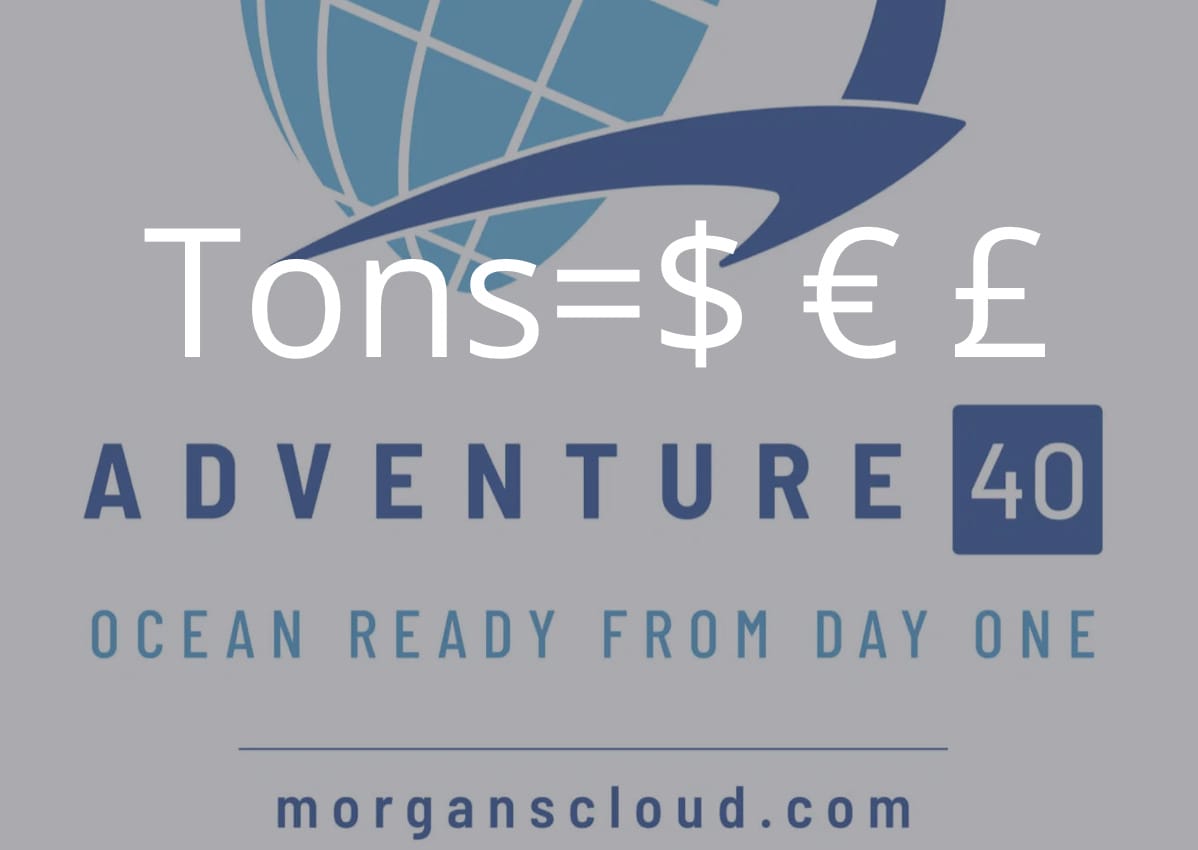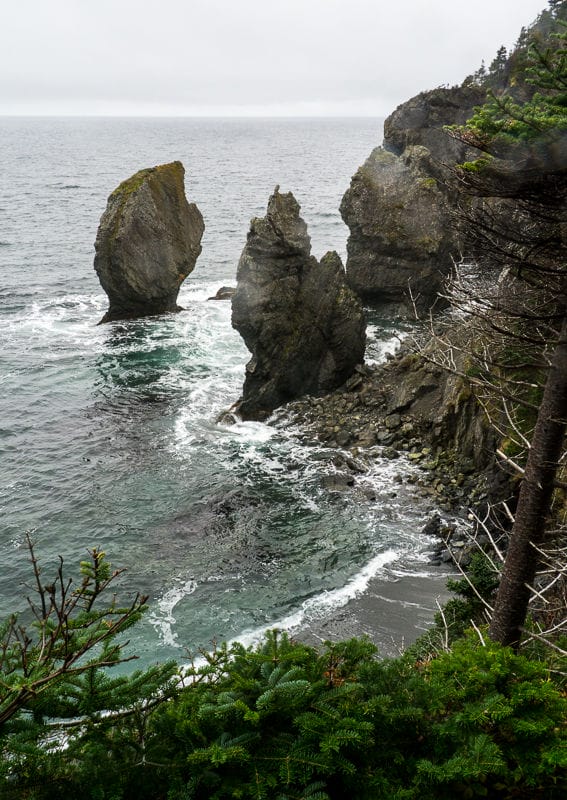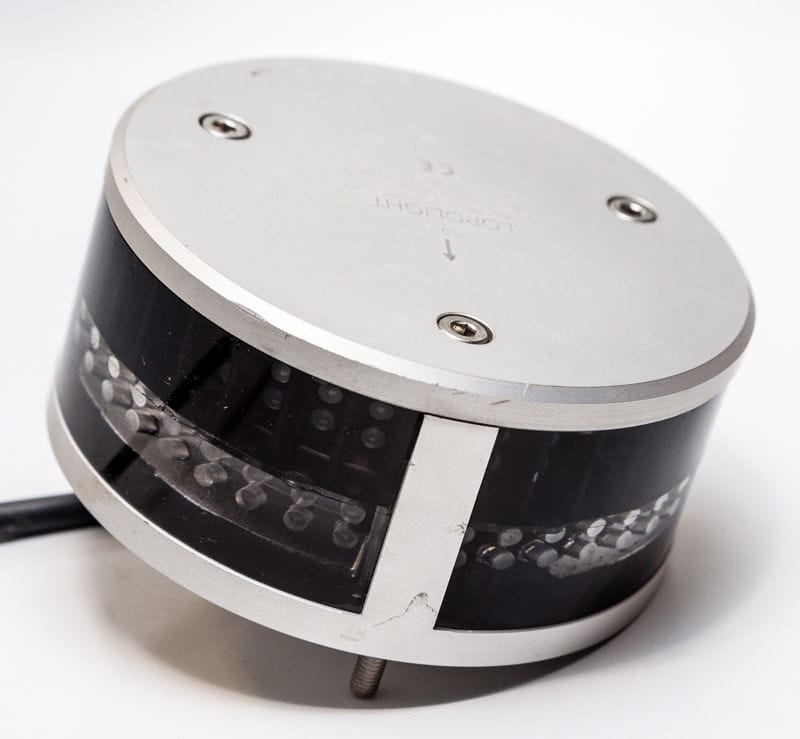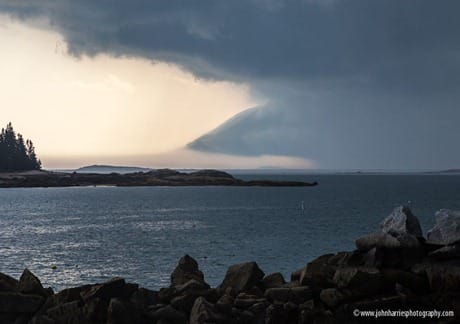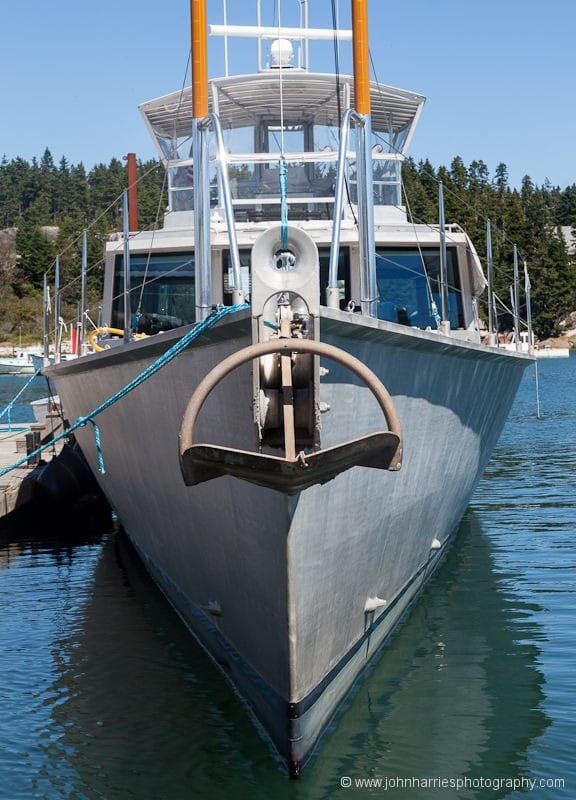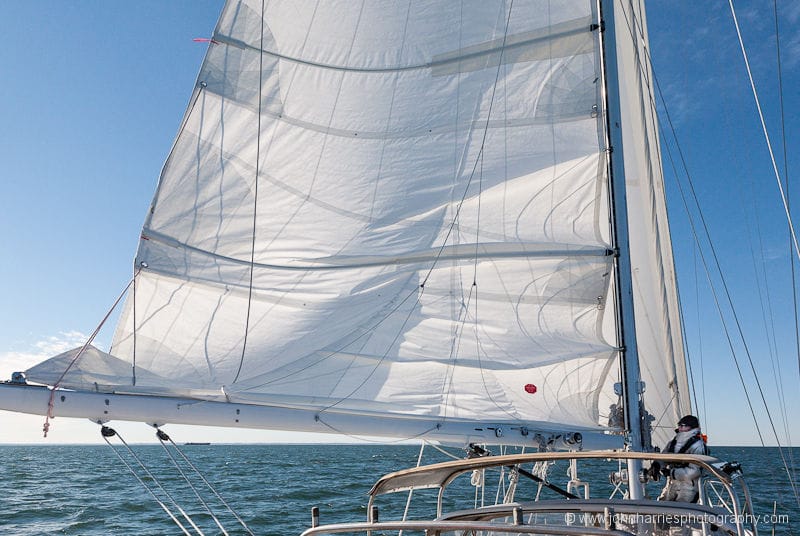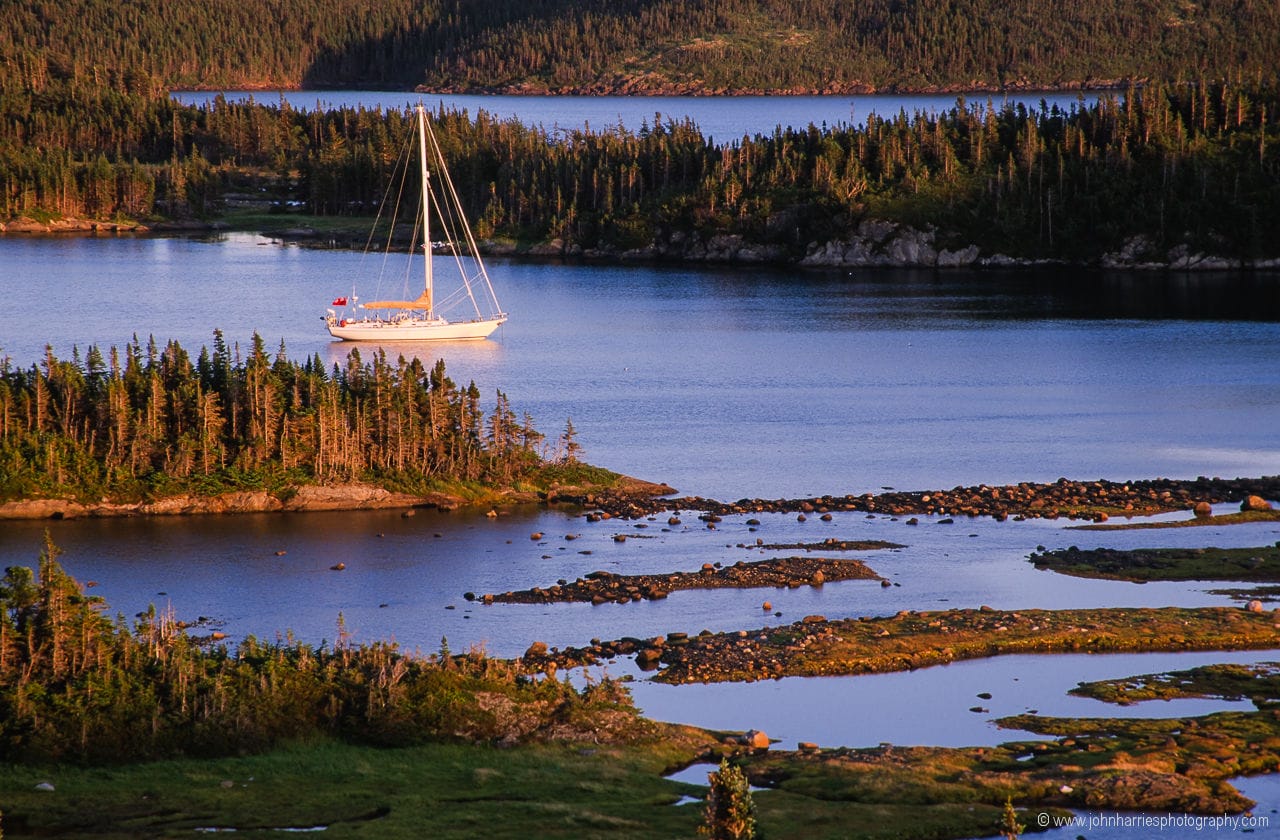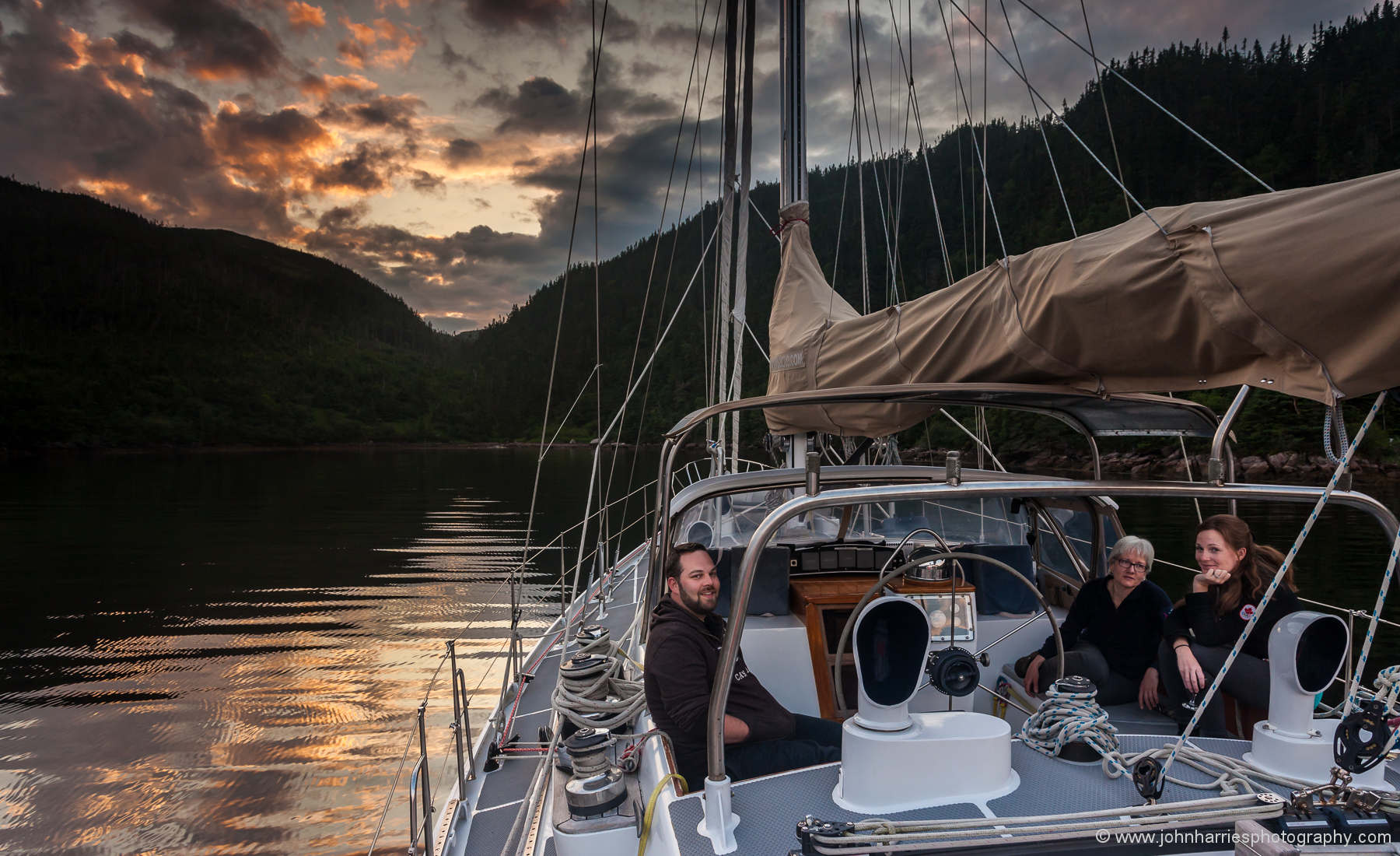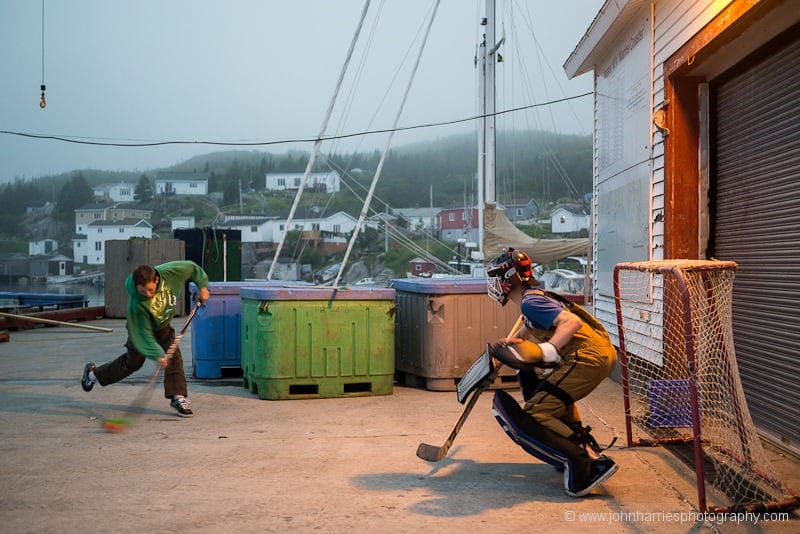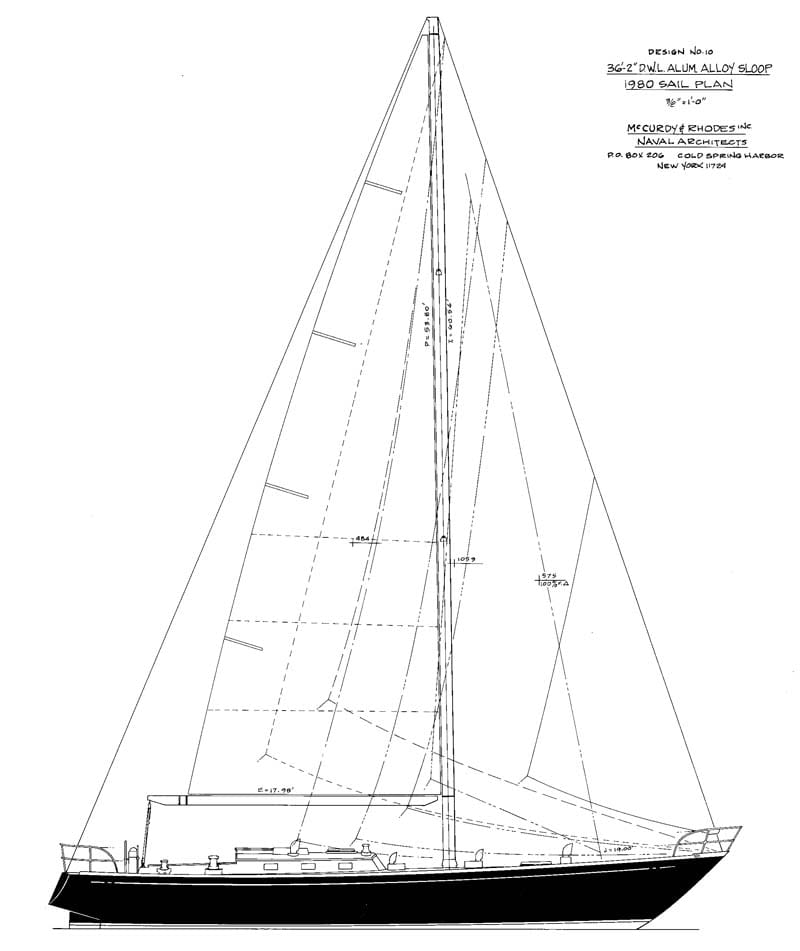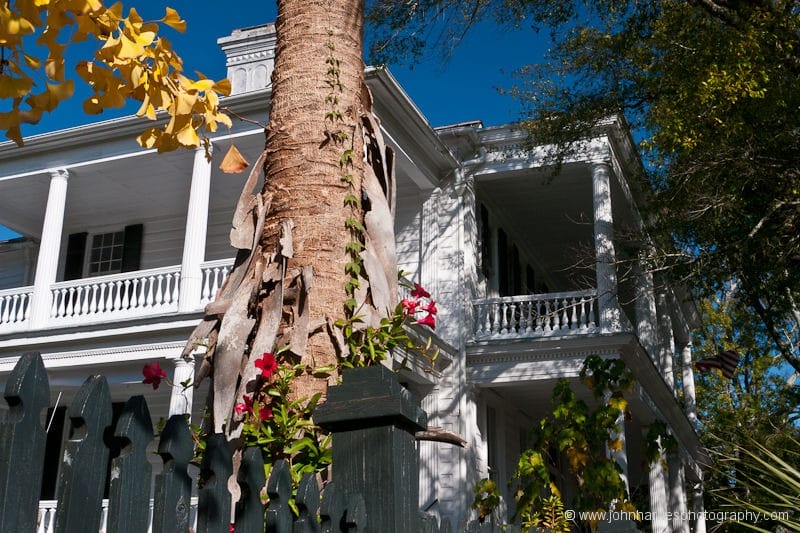-
Adventure 40—Engine and Drive Train
223 CommentsReading Time: 5 minutesFreeRead more: Adventure 40—Engine and Drive TrainEngine and drive train specification for the Adventure 40.
-
The Last Fisherman in Ramea
10 CommentsReading Time: 4 minutesFreeRead more: The Last Fisherman in RameaIt’s strange. I have never had any interest in recreational fishing. When other voyagers talk about the cool gear they have that always hooks a fish on an ocean passage and how good the catch was to eat, all I can think of is the mess on deck. It’s not that I don’t like to […]
-
Ocean Navigator Magazine
27 CommentsReading Time: 2 minutesFreeRead more: Ocean Navigator MagazineThose of you who read AAC regularly will will know that I’m no fan of the current state of the sailing magazine industry. Just how many charter-in-the-Virgin-Islands-with-cheesecake, so-we-can-sell a-bunch-of-advertising, articles do we need? Boring, boring, dull. But there is at least one shining exception to the above jaundiced view: Ocean Navigator magazine, which has always […]
-
The Risks of Falling Overboard at Sea
67 CommentsReading Time: 3 minutesMembersRead more: The Risks of Falling Overboard at SeaBefore we can come up with good and effective crew overboard prevention systems, we need to think about and clearly understand the risks we are dealing with, which I examine in this chapter.
-
We Should Focus On Staying Aboard, Not Recovery
41 CommentsReading Time: 2 minutesFreeRead more: We Should Focus On Staying Aboard, Not RecoveryThere are countless articles, books and courses that focus on recovering a crew overboard, but what really matters to the short-handed crew offshore is making as sure as humanly possible that a crew overboard situation never happens in the first place—we need prevention, not cure. This chapter introduces this Online Book and that basic concept.
-
Is It a Need or a Want?
49 CommentsReading Time: 4 minutesMembersRead more: Is It a Need or a Want?A fundamental fact is that, even if you are rich, you can’t have it all in an offshore voyaging boat and that goes double for the rest of us with more modest means. So the most important step in selecting a boat that will be successful for you is to identify the things that you really need. In this chapter I give you an easy to use and apply test to do just that.
-
A Better Chain Plate
63 CommentsReading Time: 3 minutesFreeRead more: A Better Chain PlateWhile thinking about the Adventure 40 I have worried most about two areas: chain plates and the rudder. Let’s look at a way to fix the former right.
-
Adventure 40 FAQ—The Boat
32 CommentsReading Time: 3 minutesFreeRead more: Adventure 40 FAQ—The BoatAnswers to recurring questions that come up in the hundreds of comments to our articles on the Adventure 40.
-
A Mariner’s 14 New Year’s Resolutions
52 CommentsReading Time: 3 minutesFreeRead more: A Mariner’s 14 New Year’s ResolutionsI have got to the age where I’m comfortable with my bad habits and so the standard New Year’s resolutions hold little interest for me—I’m simply not giving up whisky* or chocolate. But as a voyaging sailor, I know that forgetting the basic rules of seamanship can be the slippery road to disaster. And even after […]
-
John’s Thoughts & Photos, December 2012
17 CommentsReading Time: 3 minutesFreeRead more: John’s Thoughts & Photos, December 2012“Fun Tax” I got an email from yacht designer Ed Joy, about something else, to which he added the following: I agree with the sentiments in your hull form article. Racers having great fun scampering downwind on their sleds are dreading the “fun tax” that must be paid when it’s time to harden up the […]
-
One Anchor or Two?
128 CommentsReading Time: 6 minutesMembersRead more: One Anchor or Two?John answers the question of whether to use one anchor or two.
-
How We Will Build The A40 At A Great Price AND Deliver Great Quality
87 CommentsReading Time: 4 minutesFreeRead more: How We Will Build The A40 At A Great Price AND Deliver Great QualityTo understand how much it costs to build a boat we need to understand boat size and that has nothing to do with length overall.
-
Broken Skipper—What We Did Right
19 CommentsReading Time: 4 minutesFreeRead more: Broken Skipper—What We Did RightJohn discusses the things he and Phyllis did right when dealing with his life-threatening injury.
-
Broken Skipper—What Happened
19 CommentsReading Time: 3 minutesFreeRead more: Broken Skipper—What HappenedJohn describes a very serious injury he sustained while hiking and how incredibly helpful the Wilderness First Aid Course he and Phyllis took the year before was to managing this life-threatening situation.
-
Lopolight—Beware The Time Suck Of Complexity
70 CommentsReading Time: 3 minutesFreeRead more: Lopolight—Beware The Time Suck Of ComplexityLet’s face it, there is never enough time to keep a boat that is actively out there voyaging in perfect condition: Or at least, there is never enough time if we actually want to see the places we visit and have a life outside of boat maintenance. Therefore, we have to prioritize and be careful […]
-
Arctic Voyage eBook
28 CommentsReading Time: 2 minutesFreeRead more: Arctic Voyage eBookSee more pictures and learn more about our 2011 voyage in the eBook, “A Voyage North on Morgan’s Cloud” (free for members).
-
John’s Thoughts & Photos, September 2012
17 CommentsReading Time: 2 minutesFreeRead more: John’s Thoughts & Photos, September 2012A great piece by Charley Doane over at Wavetrain on the folly of carrying jerry jugs of fuel on deck and how to make it unnecessary with smart motor-sailing.
-
Long Thin Boats Are Cool
55 CommentsReading Time: 3 minutesFreeRead more: Long Thin Boats Are CoolA fundamental fact of yacht design is that if you want to move a given displacement—which is the only sensible way to compare boat sizes—through the water without planing, the most efficient hull form is long and thin, as demonstrated by Steve and Linda Dashew’s 83-foot motorboat, Wind Horse. A boat that can move her […]
-
A Dangerous Myth about Reefing
26 CommentsReading Time: 4 minutesMembersRead more: A Dangerous Myth about ReefingThere are probably more myths and downright wrong recommendations published about reefing than any other subject. In this chapter John exposes one of them and then goes on to explain how to do it right.
-
Choosing a Spot
29 CommentsReading Time: 5 minutesMembersRead more: Choosing a SpotIn this chapter John outlines the steps he takes to get Morgan’s Cloud anchored in the right spot the first time.
-
Newfoundland—Family, Fog and Bakeapples
8 CommentsReading Time: 2 minutesFreeRead more: Newfoundland—Family, Fog and BakeapplesBakeapples and fog…Newfoundland shows its true colours!
-
Wharf Hockey
5 CommentsReading Time: < 1 minuteFreeRead more: Wharf HockeyIce hockey, street hockey, field hockey…wharf hockey?
-
One Tough Old Aluminum Boat
94 CommentsReading Time: 3 minutesFreeRead more: One Tough Old Aluminum BoatIt is amazing how often people look surprised, and even mildly alarmed, when I tell them that we own an aluminum boat. The next tentative question(s) is almost always about electrolysis and the general longevity of the material.
-
Charleston With Travel Photography Tips
7 CommentsReading Time: 13 minutesFreeRead more: Charleston With Travel Photography TipsNow we are going to get to the hard stuff, the stuff we all have to work at for our entire photographing lives: composition and lighting. Hard yes, but John has made it more interesting and fun by using photographs in a slideshow to illustrate each tip.
-
Engineers Are Cool
32 CommentsReading Time: 2 minutesFreeRead more: Engineers Are CoolMy father was an engineer and I like to think that if I was not dyslexic, with the resulting poor academic record at school, I would be one too. In any event, I ended up being a technician (mainframe computer), which meant that I got to hang out with a lot of engineers, thereby developing […]
